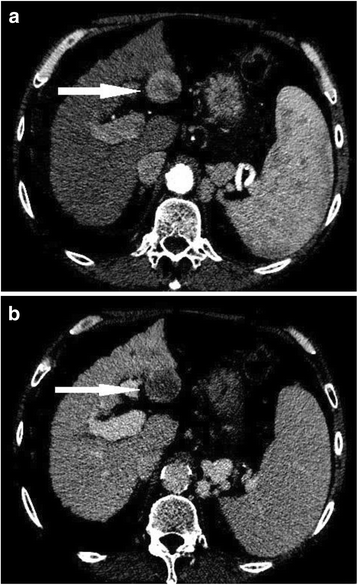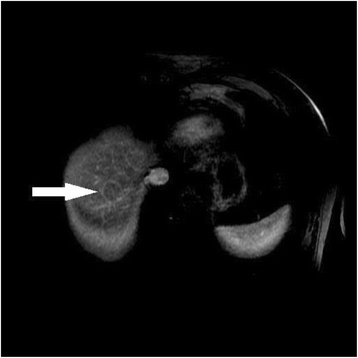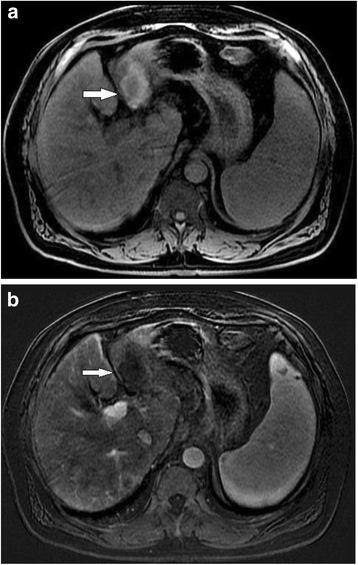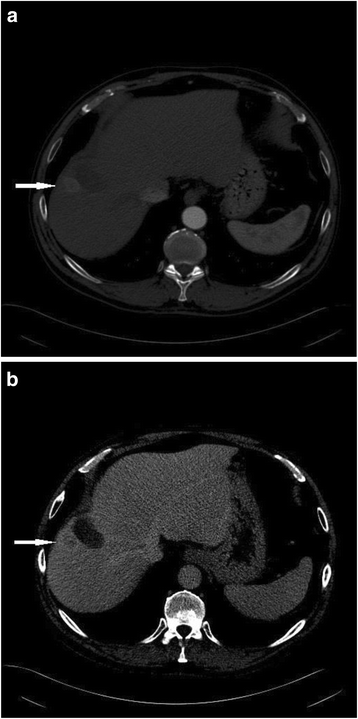Imaging of hepatocellular carcinoma and image guided therapies - how we do it
- PMID: 28259177
- PMCID: PMC5336669
- DOI: 10.1186/s40644-017-0110-z
Imaging of hepatocellular carcinoma and image guided therapies - how we do it
Abstract
Treatment options for hepatocellular carcinoma have evolved over recent years. Interventional radiologists and surgeons can offer curative treatments for early stage tumours, and locoregional therapies can be provided resulting in longer survival times. Early diagnosis with screening ultrasound is the key. CT and MRI are used to characterize lesions and determine the extent of tumour burden. Imaging techniques are discussed in this article as the correct imaging protocols are essential to optimise successful detection and characterisation. After treatment it is important to establish regular imaging follow up with CT or MRI as local residual disease can be easily treated, and recurrence elsewhere in the liver is common.
Figures






References
Publication types
MeSH terms
LinkOut - more resources
Full Text Sources
Other Literature Sources
Medical

